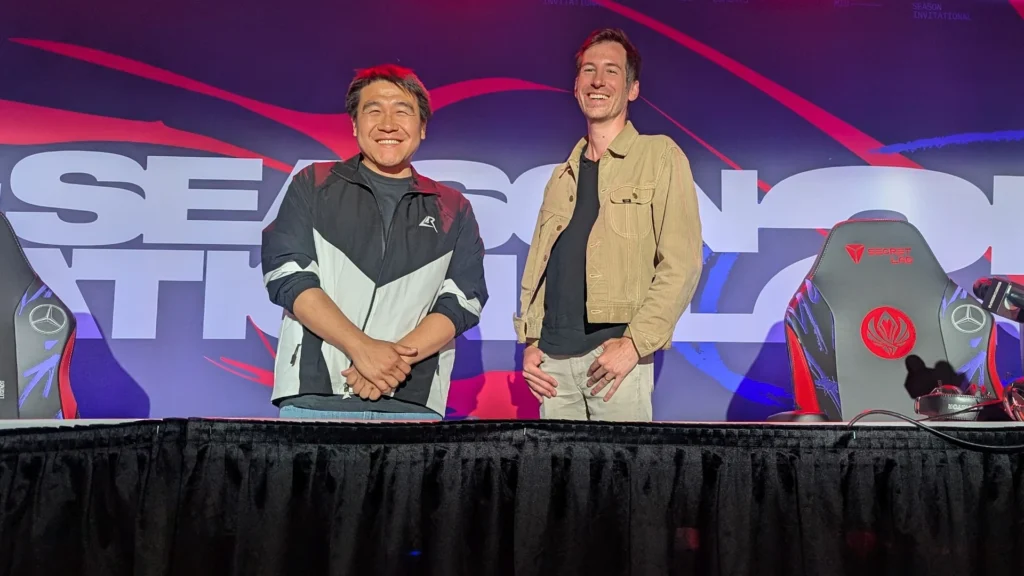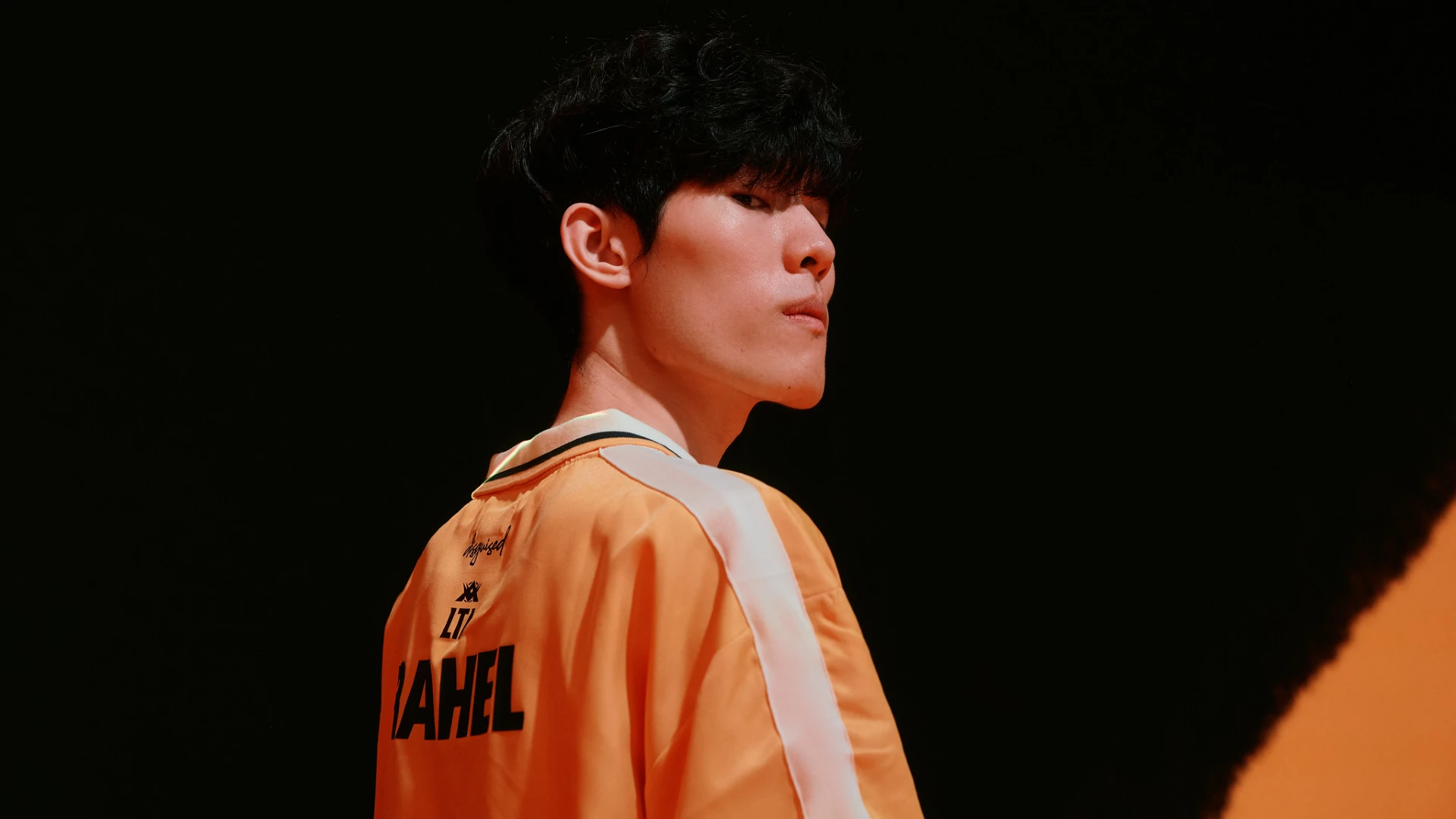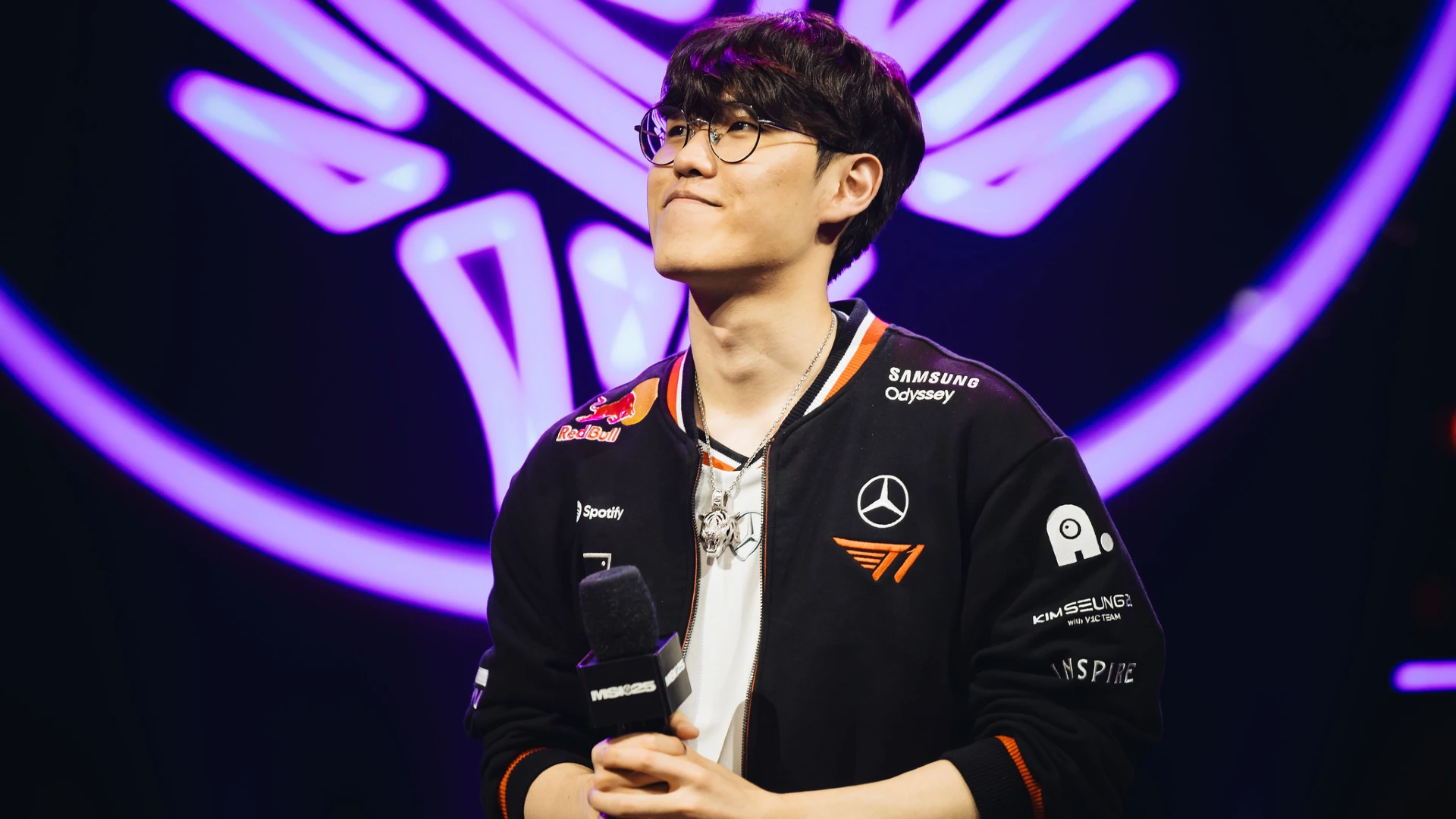Lolesports Brett Lautenbach: “We’re gonna keep trying to develop the best product possible — not just sit here and [wait]”

Game Director, League of Legends — Pu Liu and Global Product Strategy, Lolesports — Brett Lautenbach
Q: Brett, for this MSI, we started with Bo5 from the Play-ins. What was the reason? Thoughts on the format?
Brett: We looked at Bo5s and thought they offered a lot of depth especially in Fearless and, looking at this, we thought “Why not just start that straight from Play-ins and carry it through the entire event?” I think the number of Game 5’s we’ve had, and the amount of hype and excitement we’ve had — it’s worked out really well, and the fan reception has been pretty strong. And players get more time to explore the Bo5 format from the start. Very excited about it and pretty thrilled about the results so far.
Q: Thoughts on this year’s format changes? Any further planned changes to format?
Brett: Yeah there have been a ton of changes this year. We started the year with Fearless and moving to FST [we thought it would stay in Split 1]. But, you know, the fan reception was really, really strong. We rallied pretty quickly to start talking with pro players and teams. If you look at the last year-ish of changes to Lolesports, you’ll see that we’re evolving a lot, iterating a lot. The team working on Lolesports is really excited about that — we don’t want to see Lolesports as a static thing, it’s an ever-evolving product and ever-evolving sport. […]
Our fans have really high expectations — rightfully so — and we want to make sure we’re surpassing those wherever we can.
Q: There have been massive changes to neutral objectives pretty consistently — what do you think about this? Will it keep changing?
Pu: I think certainly they’ve been pretty influential. They’ve dictated a lot of things — changing how teams laneswap, what teams draft and prioritize. You’ve already seen us iterate it on it a lot [with Grubs changes, Drake changes, Feats changes].
Certainly, those things are very influential in the way that both players at home and pro players engage with the game, and we don’t think that we get them right [every time]. We definitely don’t always get it right the first time — when we roll something out, we certainly have a specific goal [in mind].
Sometimes, those goals are achieved very well, but bring some pain with them, and we have to evaluate how to mitigate that pain — and other times it doesn’t achieve that goal at all, so we’re constantly evaluating. One thing we’re quite good at is evaluating and acknowledging that what we did isn’t quite perfect.
As you saw with Season 2 and some of the changes, we’ll keep trying to evaluate things we’ve done in the past as well as looking for opportunities to add things in the future.
Q: Uzi was initiated into the HoL this year. Did the commercial success meet Riot’s expectations? What are your thoughts on the HoL as it stands?
Brett: We’re stoked with where HoL is at from a commercial standpoint, obviously the sales window is still open. But more importantly, we’re really excited about the fan reaction. I think fans have been really excited about Uzi, his career, and the LPL, especially fans in China.
We’ve actually started our voting with our panelists around the world for the inductee next year, so we’re very excited to see where we land for next year’s inductee.
Q: Brett, the MSI format this time had Fearless draft and Bo5s, both new additions — will things keep changing or have we arrived at a place where Riot is happy with it?
Brett: I think, going back to what I said earlier, the way we look at our formats and our sport is iterative and evolving. We’ve had some changes this year which have been really [well received], we’ve had great viewership, some great matches, and some great bo5s. As we get to the end of the split, the end of every event, and to the end of the year, we [look at the system] think about “What’s working? [What could we improve for players, pro players, and fans?] What should we be doing more or less of, and what should we make our big bets on?”
Nothing to announce in terms of changes for the future, but expect that we’re gonna continue to evolve our sport to meet the moment.
Q: Any thoughts on making modes like Arena, URF, etc permanent?
Pu: We’re always evaluating which modes we should turn on, for how long, and how frequently they should rotate. Certainly our decision was very much influenced by players, particularly in the Chinese region. They really, really like Arena, and that’s great to see.
The reason that we’re investing so much in things like ARAM with the recent updates, is because we know that players really appreciate and love those updates in terms of permanence.
In terms of permanence, [it’s about] seeing how much the playerbase gets fractionalized and how much we can maintain the [level of interest] in the gamemode. Obviously, if we were to make 20 modes and release them, our playerbase would be very divided in terms of attention, queue times, etc. And we would want to make sure we’re updating and keeping them up to the point where they retain their fun and deserve the player’s time, […] interest, and that it can grow or sustain itself.
A lot of our rotating game modes, when they first release for a given run, it’s very popular and exciting, but then players go back to ARAM or Ranked. We think those types of modes are better served for our players.
That doesn’t mean we won’t make modes permanent. We’re seeing some pretty strong sustenance from this Arena mode, so we’ll keep evaluating. But ARAM is a good example of a mode that players loved so much we just kept it around forever.
Q from NAmen: Though you said viewership has been way higher this year, LTA viewership hasn’t gone up — how does Riot view the merger overall?
Brett: I think when we look at viewership there’s a ton of different factors that play into it — you can’t just sit there and say, “it’s the brand, it’s the merger, etc”. What we’re trying to do is find what’s working right now within fanbases in both NA and SA and double down on those.
Mark, Caco, and Igor are always working really diligently on adapting and updating formats and schedules, to try and make sure we’re doing the best we can [for] our players.
Our fans in North and South America have a high expectation for our product. And I think they’re doing everything they can to make sure we’re continuing to serve all of our fans.
I wouldn’t necessarily say it’s one thing or another, but I do know we want to continue to deliver something bigger and better for fans in North and South America.
Q: Pu, you’re wearing an LR jacket — what does Riot think of costreamers in the Lolesports space right now?
Pu: I’m a fan. I think Brett is more equipped to answer this question.
Brett: We love our costreamers. I think [we look at it this way]: our fans have a lot of different expectations, and different desires, on how they wanna watch esports as a product. Some people — like me, I’m a boomer for esports — [are] almost always watching the main feed broadcast.
But we have fans who really, really attach to certain personas, different folks, and really wanna see the event through their lens. So looking at folks like Caedrel, I can totally understand why there’s a lot of folks who really wanna watch [him] and kind of have that experience with his commentary on top of it.
I think we wanna continue to work with costreamers across the board. We’ve got a bunch of them here. I think it’s the most we’ve had at MSI ever — 70-something costreamers across the world. It’s really, really great for us from a regional engagement standpoint, from a “different languages” standpoint, and then from just offering the product that our fans want.
I think that’s super important to us.
Pu: And, I think, ultimately, we’re all a little bit parasocial. We like to sit in on their scrims, ask Baus why he inted that one time and why it was a good death — it’s very entertaining and allows us to feel like we’re part of it. I think [Los Ratones] breaking some of those barriers that are typically perceived has been super compelling to me as a fan and viewer.
Q: What is the future for Gamechangers in Lolesports?
Brett: We’re super stoked about what’s going on in EMEA with Game Changers. We’re gonna continue to evaluate GC on a region-by-region basis, and it’s really important to look for really inclusive environments for all of our players to participate at a competitive level — what they’ve been able to pull off in EMEA so far is really important.
[Game Changers] will be a region-by-region basis as opposed to global.
Q: Are there any plans to support NA players in GC/Equal Esports tournaments?
Brett: I think we’re going to keep looking into it. I don’t have anything to announce today in terms of what we’ll do in North America. But it’s definitely important for us.
Q from NAmen: How do you view the reception and execution of the LTA merger?
Brett: I know that a lot of fans had a lot of love for the LCS and CBLOL brands. We’re incredibly sympathetic to that — those brands had a tremendous amount of legacy attached to them. We don’t have anything to say today about those brands or anything. But what I will say is we’re going to continue to really strive to build the best product for those fans. […]
We’re looking at esports as an iterative process right now. So when we come out and make these changes, we’re going to look at them and say, “What’s working? What do we think is not working? Where do we need to fine-tune? What do we need to change to make this a better product and kind of meet the moment for our fan base?”
Like I said, we’ve got nothing to announce, but that’s the lens that we’re looking at all of our regions through, as it relates to North and South America as well.
Q: Is there any plans from Riot in developing talent *outside* of players, like talent and observers?
Brett: As you said, as you look at those products, having up-and-coming talent is really important. I think we’ve seen some of those folks come through the Tier 2 development scene and show up across the board. I think for us, it takes a village, to your point. This isn’t just pro players, this isn’t just fans, this is everyone who goes into it from talent, to observers, [etc] We’re gonna continue to push to develop that talent out.
Q: What would it take for LoL to have a GC circuit as developed as VALORANT?
Brett: As we look at it region-by-region, it’s how we develop that regionally first and foremost, and then we create that bridge to the global ecosystem. And I think that’s kind of how [Lolesports] developed over time. We were really grounded in our regions, first and foremost, when we rolled out esports originally, and then the global apparatus [came in]on top of that after we started to see it grow.
“Hey, there’s a real thing that can connect North America, South America, to Korea. How do we continue to do that?”. We’ll take a similar approach to Game Changers.
Q: Is it a financial issue? Is it not financially justifiable to support a global GC scene?
Brett: I don’t think it’s necessarily a financial thing — we’re always looking for a way to create esports that are sustainable for the future, whether that’s GC, developmental leagues, or Tier 1. It’s super important to us, but we’re gonna continue to look at that on a region-by-region basis.
Q from NAmen: Guaranteed slots at international events work very differently for the LCP and LTA. Why was the decision to make guaranteed slots different for both? Do you think it alienates fans of former regions like the PCS and LJL?
Brett: First and foremost, just as table setting, we look at all of our regions region specific. We really don’t wanna paint with a broad brush across our global esport in any way — what works for EMEA is gonna work for EMEA in a way that might not be the right decision for North America, [or] might not be the right decision in China or South Korea and so on. When we make these decisions, we’re working really closely with the team on the ground, leaning into their expertise for their fan bases and what’s gonna resonate and what’s not.
So when we looked at LCP and [started] working with the folks over there, it made a lot of sense to end up in this format. I think the fan base has really coalesced around it. When it comes to looking at decisions that we’ve made where we said, we really wanna give an opportunity for both LTA North and LTA South to show up to MSI, to have their moment, that was important to us. We’re always looking at [with every change], what are the [overall] impacts of this, what can we do to continue to make a better product, if [that’s the best iteration].
And so I think we’ll continue to look at that as we think about better international events for the years to come.
Q: Any consideration of double elimination at Worlds? Would you consider it after this MSI?
Brett: What I would start by saying is Worlds and MSI are very different events, and I think [we have] very different things we’re going for. We’ve loved what we’ve seen out of Swiss at Worlds. Worlds is at a scope and scale that is quite [a bit] longer than MSI. Swiss really does this awesome job of keeping the story engaging day in and day out where you’re looking at the draws, you’re looking at those match win-losses and thinking, “Hey, what’s coming next? Who’s gonna play who?”
And that’s really exciting when you’re on the road for four weeks at a time. Where this format really works with the time box we have around MSI — so we definitely wanna learn from one event to the next, and that’s been super important.
But I don’t think we’re gonna sit there and say, “Oh, well, double elimination worked in MSI, so therefore we’re gonna go try it at Worlds.” Worlds is its own beast, and we wanna make sure that the events really live up to the moment they’re built for.
Q: Where do you and your team envision Lolesports in 2, 5, and 10 years?
Brett: Man, my son’s gonna be 14 by then. That’s scary. I think if there’s one message I’ll continue to beat the drum on — and I probably sound really redundant at this point — it’s that evolution. It’s looking at everything.
[For example], you look at the HUD. We came out the gate with the HUD changes this year at FST. Spicy decisions, certainly. We had a lot of feedback, but we love that feedback from the fans.
And he’s somewhere in the building right now, but God bless Sam Jameson, who has, over the past few months, been in every Twitter thread and every Reddit thread, listening to fans, getting feedback, answering questions where he can — iterating on that [HUD]. We’ve gotten to a really cool spot.
We’ve done a lot of homework since then to develop that for MSI, and we’ll continue to iterate on that. I think when we look at pretty much everything across the board — whether it’s formats, how we think about regions, how we do global events, how we interact with the game — I think you’ve seen this year all of the [new connections we’ve had with] the season stuff and how we connect to the game […] all of that is really cool.
We’re gonna keep trying to develop the best product possible — not just sit here and say, “Hey, we’re Lolesports, we’re the biggest thing around, so that’s great.” I think for us it’s about what’s changing in the world that makes things more exciting that makes us want to change too.
Q: Any final thoughts, Pu?
Pu: Nailed it.

